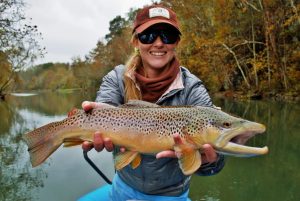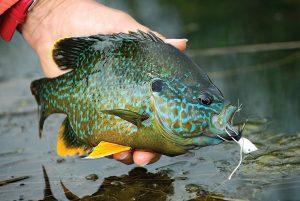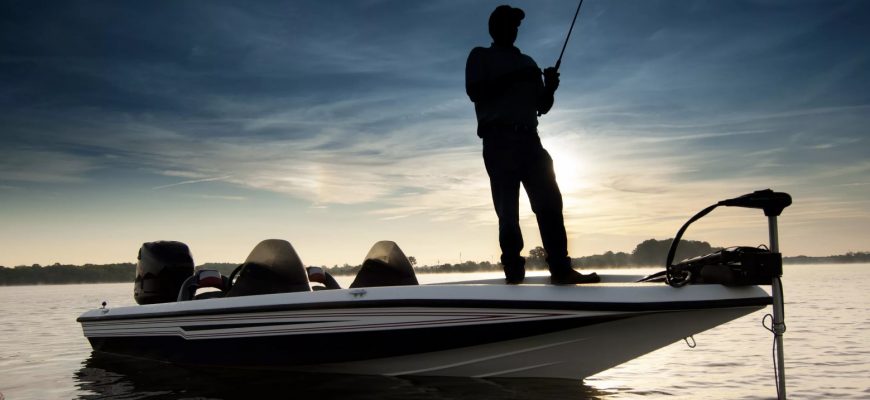Every angler, from beginner to expert, should strive to master a variety of fishing techniques to increase their success on the water. By learning and applying these top 10 fishing methods, you’ll boost your catch rates and become a more versatile angler. This article will cover essential fishing techniques, including jigging, drop shot rigging, topwater fishing, Texas rigging, trolling, float fishing, Carolina rigging, fly fishing, vertical fishing, and surfcasting. We’ll explore the gear, lures, and tactics needed to excel at each technique and help you become a well-rounded angler.
- Jigging: The Versatile Technique for Freshwater and Saltwater Fishing
- Drop Shot Rigging: A Finesse Approach for Finicky Fish
- Topwater Fishing: Exciting Surface Action for Aggressive Predators
- Texas Rigging: Weedless Soft Plastics for Bass and Other Species
- Trolling: Covering Water and Targeting Fish at Various Depths
- Float Fishing: Timeless Techniques for Live Bait and Artificial Presentations
- Carolina Rigging: Effective Bottom Contact for a Natural Bait Presentation
- Fly Fishing: The Artful Approach to Catching Fish on the Fly
- Vertical Fishing: Targeting Deep-Water Species with Precision
- Surfcasting: Mastering the Art of Long-Distance Casting in Coastal Waters
- Elevate Your Fishing Skills by Mastering These Top 10 Techniques
Jigging: The Versatile Technique for Freshwater and Saltwater Fishing
Jigging is a popular and versatile technique that can be used in both freshwater and saltwater environments. Using a jig, a weighted hook with a soft plastic or hair dressing, anglers can target various species, including bass, walleye, and panfish in freshwater, and snapper, grouper, and amberjack in saltwater.
To jig, cast the lure out and let it sink to the desired depth. Then, twitch the rod tip to create an enticing movement, allowing the jig to fall back down on a slack line. Repeat this process as you retrieve the jig. Key jigging gear includes a medium to medium-heavy action rod, a quality spinning or baitcasting reel, and braided or fluorocarbon line.

Drop Shot Rigging: A Finesse Approach for Finicky Fish
Drop shot rigging is a finesse technique used to present soft plastic baits to finicky fish, particularly bass. This rig consists of a weight attached to the end of the line, with a hook tied directly to the line above the weight. The bait is then nose-hooked or wacky-rigged on the hook.
To fish a drop shot rig, cast it out and let it sink to the bottom. Keep the line tight and gently twitch the rod tip, causing the bait to dance enticingly above the bottom. A sensitive spinning rod, a smooth reel, and light fluorocarbon line are essential for this technique.
Topwater Fishing: Exciting Surface Action for Aggressive Predators
Topwater fishing involves using floating lures that create commotion on the water’s surface, attracting aggressive predators like bass, pike, and muskie. Popular topwater lures include poppers, buzzbaits, and walking baits.
To fish topwater lures, cast them near cover, structure, or feeding fish. Retrieve the lure with a mix of twitches, pauses, and steady movement to mimic injured prey. A medium to medium-heavy action rod, a baitcasting or spinning reel, and braided or monofilament line are ideal for topwater fishing.

Texas Rigging: Weedless Soft Plastics for Bass and Other Species
The Texas rig is a weedless presentation used to fish soft plastic baits, such as worms, craws, and creature baits, in heavy cover. To rig a Texas rig, slide a bullet weight onto your line, followed by a glass bead (optional), and tie on a wide-gap worm hook. Then, insert the hook point into the bait’s head, thread it onto the hook shank, and bury the hook point back into the bait for a weedless setup.
Cast the Texas rig near structure and cover, let it sink, and retrieve it with a series of hops, drags, and pauses. A medium-heavy action rod, baitcasting reel, and fluorocarbon or braided line with a fluorocarbon leader are suitable for this technique.
Trolling: Covering Water and Targeting Fish at Various Depths
Trolling is a technique that involves moving the boat while dragging lures or bait behind it at varying depths. This method allows anglers to cover a lot of water and target fish in deeper areas. Trolling is effective for targeting species like salmon, trout, walleye, and striped bass.
Key trolling gear includes a trolling rod and reel, line-counter reels, downriggers or planer boards, and a selection of crankbaits, spoons, or bait rigs. To troll effectively, monitor your speed and depth to keep your lures in the strike zone.
Float Fishing: Timeless Techniques for Live Bait and Artificial Presentations
Float fishing is a classic method that can be adapted for a variety of species and environments. By suspending bait or lures beneath a float or bobber, anglers can control the depth and maintain a natural presentation.
To float fish, adjust the depth of your bait or lure by moving the float along the line, cast out, and wait for the float to indicate a bite. Key float fishing gear includes a light to medium action rod, a spinning reel, and monofilament or fluorocarbon line.
Carolina Rigging: Effective Bottom Contact for a Natural Bait Presentation
The Carolina rig is a versatile setup that presents soft plastic baits near the bottom with a natural, dragging action. This rig consists of a sliding egg sinker, a bead or swivel, a leader, and a wide-gap hook. To fish a Carolina rig, cast it out, let it sink, and slowly drag it along the bottom with occasional pauses.
A medium-heavy action rod, a baitcasting or spinning reel, and fluorocarbon or braided line with a fluorocarbon leader are ideal for Carolina rigging.
Fly Fishing: The Artful Approach to Catching Fish on the Fly
Fly fishing is a specialized technique that uses artificial flies and specialized gear to present lightweight lures to fish. Fly fishing can be effective for targeting trout, salmon, bass, and many other species.
Key fly fishing gear includes a fly rod, fly reel, fly line, leader, and a selection of flies. Fly fishing requires mastering casting techniques, such as the overhead cast and roll cast, to present the fly accurately and naturally.

Vertical Fishing: Targeting Deep-Water Species with Precision
Vertical fishing is a technique that involves dropping a lure or bait straight down to target fish in deep water. This method is effective for species like lake trout, crappie, and deep-sea bottom fish.
To vertically fish, lower your lure or bait to the desired depth, and jig or finesse it to entice bites. A medium to medium-heavy action rod, a spinning or baitcasting reel, and braided or fluorocarbon line are essential for vertical fishing.
Surfcasting: Mastering the Art of Long-Distance Casting in Coastal Waters
Surfcasting involves casting lures or bait from shore into the surf zone to target coastal species like striped bass, redfish, and flounder. To excel at surfcasting, anglers must master long-distance casting techniques and learn to read the beach’s structure and currents.
Key surfcasting gear includes a long surf rod, a spinning or conventional reel, and braided or monofilament line. Choose lures or bait rigs that match local prey species and conditions.
Elevate Your Fishing Skills by Mastering These Top 10 Techniques
By learning and practicing these top 10 fishing techniques, you’ll become a more versatile and successful angler. From jigging to surfcasting, each method offers unique challenges and rewards. Equip yourself with the appropriate gear, lures, and knowledge, and you’ll be ready to tackle any fishing situation that comes your way. As you master each technique, you’ll discover new ways to adapt and refine your approach to match the conditions, target species, and environments you encounter.
Remember that practice and patience are key when learning new techniques, and don’t be afraid to ask for advice from experienced anglers or local tackle shops. By broadening your skillset and staying open to new tactics, you’ll elevate your fishing game and enjoy more memorable days on the water.
So go ahead, invest time in learning and mastering these top 10 fishing techniques. Your future catches and angling adventures will undoubtedly benefit from the diverse skills and knowledge you gain. The more versatile you are as an angler, the more opportunities you’ll have to experience the thrill of a tight line and the satisfaction of a successful day on the water.
